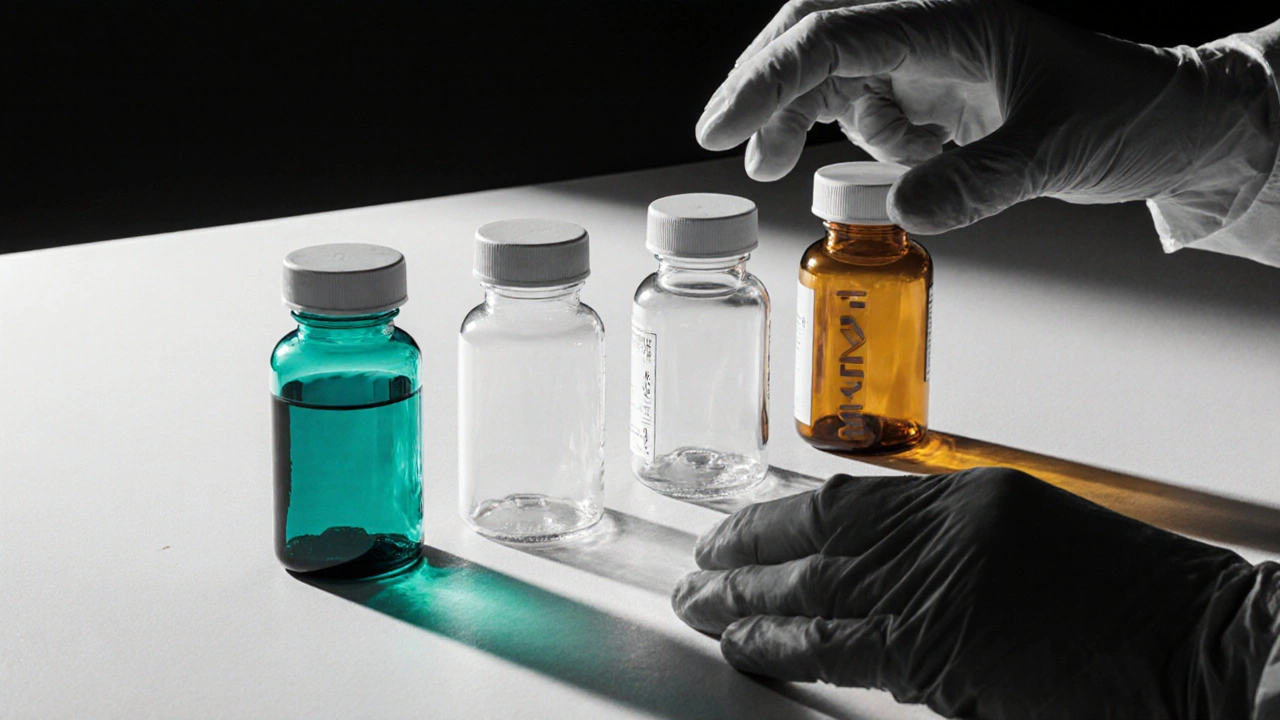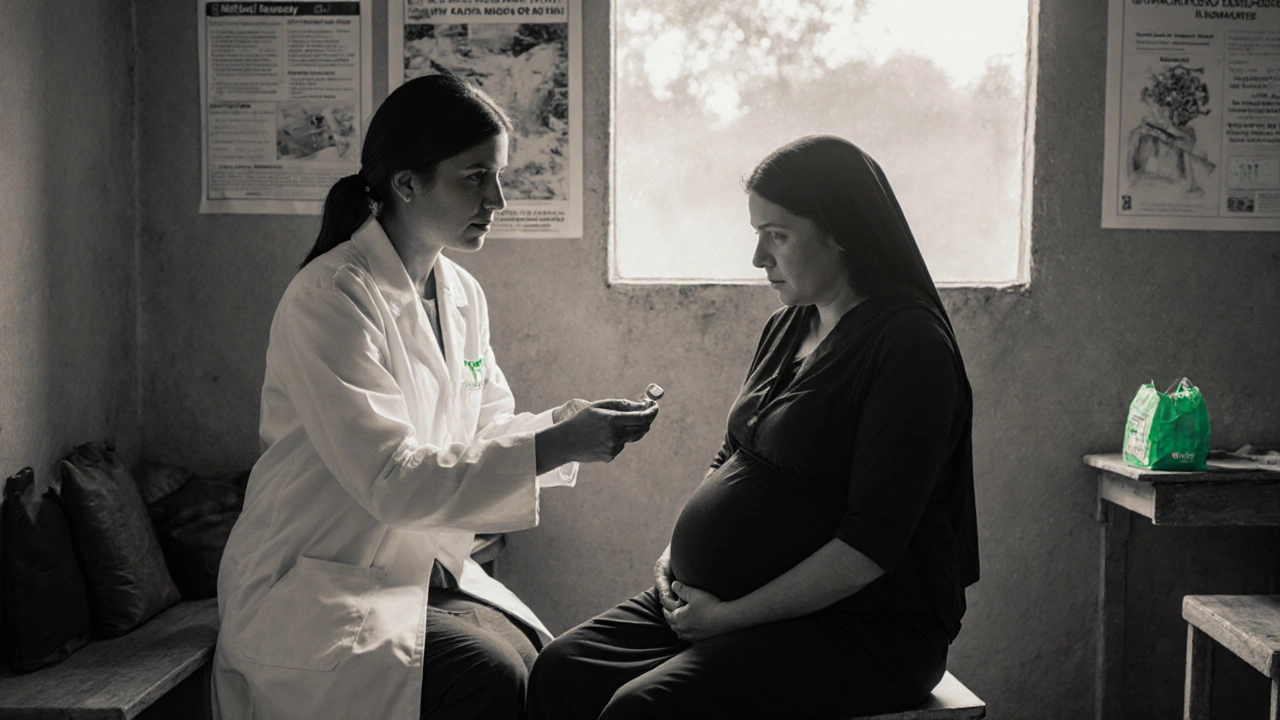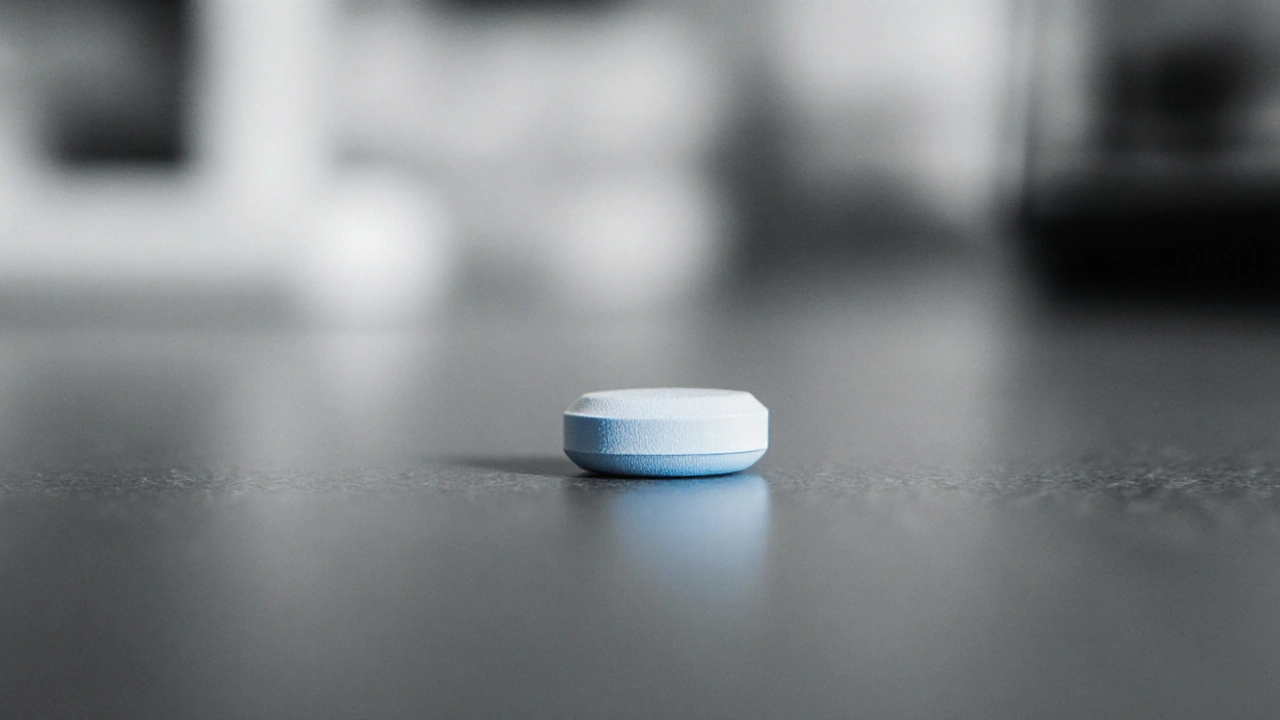HIV Drug Comparison Tool
Select Your Patient Profile
Recommended Treatment Options
Key Comparison
| Drug | Class | Potency | Resistance Barrier | Major Side Effects | Cost |
|---|
Quick Summary
- Epivir (Lamivudine) is a well‑established NRTI with a strong safety record.
- It shares a similar potency to emtricitabine but is cheaper in many markets.
- Zidovudine is older, more toxic, and rarely used as first‑line today.
- Tenofovir disoproxil fumarate (TDF) offers higher barrier to resistance but can affect kidneys.
- Choosing the right partner drug depends on resistance profile, side‑effect tolerance, and cost.
What Is Epivir (Lamivudine)?
When discussing HIV treatment, Epivir (Lamivudine) is a nucleoside reverse transcriptase inhibitor (NRTI) that blocks HIV replication by mimicking the natural nucleoside cytidine. First approved in the mid‑1990s, it quickly became a backbone of combination therapy because of its low toxicity and once‑daily dosing.
Lamivudine works by inserting itself into the growing viral DNA chain. Once incorporated, the viral reverse transcriptase can’t add any more nucleotides, halting the virus in its tracks. This mechanism is shared with other NRTIs, but the molecule’s small size and high intracellular phosphorylation rate give it a pharmacokinetic edge.
How Lamivudine Is Used in Modern Regimens
In today’s guidelines, lamivudine is rarely given alone. It is paired with a second NRTI (often tenofovir) and an integrase inhibitor (like dolutegravir) to form a three‑drug regimen that suppresses viral load to undetectable levels in >95% of patients.
Typical adult dosing is 300mg once daily, taken with or without food. For children, weight‑based dosing is used, and the drug is available as a liquid formulation for easier administration.
Key Metrics for Comparing HIV Drugs
Before diving into alternatives, it helps to know which criteria matter most when clinicians pick a drug:
- Potency: Ability to reduce viral load quickly.
- Barrier to resistance: How easily the virus can develop mutations that render the drug ineffective.
- Side‑effect profile: Short‑term and long‑term tolerability.
- Drug interactions: Compatibility with other antiretrovirals and common medications.
- Cost and availability: Especially relevant in low‑resource settings.
These five pillars guide the table below, where we line up lamivudine against its most common alternatives.

Alternative NRTIs and What Sets Them Apart
Zidovudine (AZT) was the first approved antiretroviral. It remains useful in some salvage regimens but is notorious for anemia, neutropenia, and mitochondrial toxicity.
Tenofovir disoproxil fumarate (TDF) is a potent NRTI with a high barrier to resistance. Its drawbacks include potential kidney dysfunction and loss of bone mineral density.
Emtricitabine (FTC) is chemically similar to lamivudine, offering comparable potency but at a slightly higher cost. Many fixed‑dose combinations (e.g., Truvada) include FTC because it pairs well with tenofovir.
Abacavir is effective but requires HLA‑B*57:01 testing before use due to a risk of hypersensitivity reactions. It’s often chosen for patients who can’t tolerate tenofovir.
Beyond NRTIs, integrase inhibitors like Dolutegravir have become the preferred third drug because of their high barrier to resistance and minimal drug‑drug interactions.
Side‑Effect Comparison
Side‑effect tolerance can make or break adherence. Here’s a quick rundown:
- Lamivudine: Generally well tolerated; rare nausea or headache.
- Zidovudine: Anemia, neutropenia, lipodystrophy.
- Tenofovir (TDF): Renal tubular dysfunction, decreased bone mineral density.
- Emtricitabine: Mild diarrhea, occasional rash.
- Abacavir: Hypersensitivity (requires HLA testing), possible cardiovascular risk.
Most clinicians favor lamivudine or emtricitabine when the patient’s kidney function is normal, reserving tenofovir for those needing a stronger barrier to resistance.
Cost and Global Availability
In high‑income countries, all five NRTIs are available as generics, but price gaps remain. Lamivudine and zidovudine are often the cheapest, with generic prices under US$5 per month in many markets. Tenofovir and emtricitabine sit around US$10‑15, while abacavir can exceed US$20 because of newer patents.
For low‑resource settings, WHO’s 2023 guidelines still list lamivudine as a first‑line option due to its affordability and safety.
Side‑by‑Side Comparison Table
| Drug | Class | Typical Dose | Potency (VL reduction) | Resistance Barrier | Major Side‑Effects | Cost (US$/month) |
|---|---|---|---|---|---|---|
| Lamivudine | NRTI | 300mg QD | High | Medium (M184V mutation) | Rare nausea, headache | ~5 |
| Zidovudine | NRTI | 300mg BID | Moderate | Low | Anemia, neutropenia | ~4 |
| Tenofovir (TDF) | NRTI | 300mg QD | Very high | High | Kidney toxicity, bone loss | ~12 |
| Emtricitabine | NRTI | 200mg QD | High | Medium (M184V) | Diarrhea, rash | ~12 |
| Abacavir | NRTI | 600mg BID | High | Medium | Hypersensitivity (HLA‑B*57:01) | ~20 |

When to Choose Lamivudine Over Others
Lamivudine shines in three scenarios:
- Budget‑constrained settings: Its low price makes it a go‑to for public health programs.
- Patients with renal concerns: Unlike tenofovir, lamivudine does not strain kidneys.
- Women of child‑bearing age: It has an excellent safety record in pregnancy.
If a patient already harbors the M184V mutation, lamivudine’s efficacy drops, and clinicians often switch to emtricitabine or add a boosted protease inhibitor.
Potential Pitfalls and How to Avoid Them
- Drug‑drug interactions: Lamivudine has few, but co‑administration with didanosine can increase toxicity-avoid the combo.
- Resistance testing: Always run a baseline genotype. If M184V is present, consider an alternative NRTI.
- Adherence support: Even a well‑tolerated drug fails if doses are missed. Use pillboxes or mobile reminders.
Bottom Line
While newer agents like tenofovir and integrase inhibitors dominate first‑line regimens, Epivir (Lamivudine) remains a solid, low‑cost option with a clean safety profile. Its main competition-emtricitabine-offers similar efficacy at a higher price, whereas zidovudine and abacavir each carry specific toxicity or testing burdens. The right choice boils down to the patient’s resistance profile, organ function, and financial constraints.
Frequently Asked Questions
Can I use lamivudine alone for HIV treatment?
No. Current guidelines recommend using lamivudine as part of a combination regimen-usually with another NRTI and an integrase or protease inhibitor-to achieve durable viral suppression.
Is lamivudine safe during pregnancy?
Yes. Lamivudine is classified as Pregnancy Category C in the US but has been widely used in pregnant women without evidence of fetal harm. Many guidelines list it as a preferred NRTI for pregnant patients.
What does the M184V mutation mean for lamivudine?
M184V reduces lamivudine’s activity dramatically. However, the mutation also makes the virus less fit and more susceptible to other NRTIs, so clinicians may keep lamivudine in a regimen for its “fitness‑cost” benefit while adding a stronger partner drug.
How does lamivudine compare to emtricitabine in terms of resistance?
Both drugs share the same resistance pathway (M184V/I). Their clinical potency is nearly identical; the choice often hinges on cost, availability, or whether a fixed‑dose combination is desired.
Are there any notable drug interactions with lamivudine?
Lamivudine has a very low interaction potential. The main caution is avoiding co‑administration with didanosine, which can increase the risk of pancreatitis.



Kate Babasa
October 16, 2025 AT 17:17Regarding the NRTI landscape, lamivudine (Epivir) epitomises a high‑fidelity nucleoside analogue; its intracellular phosphorylation efficiency, coupled with a negligible mitochondrial toxicity profile, renders it a cornerstone of regimen design, especially in resource‑limited settings, where cost‑effectiveness is paramount; clinicians frequently leverage its synergistic potential with tenofovir, thereby optimizing the barrier to resistance while preserving renal function, and the drug’s pharmacokinetic stability further facilitates fixed‑dose combination formulation, which in turn enhances adherence metrics across diverse patient cohorts.
king singh
October 21, 2025 AT 19:41Lamivudine remains a solid back‑bone in many regimens.
Adam Martin
October 26, 2025 AT 23:51It is fascinating, albeit somewhat predictable, that the discourse surrounding lamivudine still oscillates between reverence for its historic role and a grudging acknowledgement of its limitations; the drug’s molecular architecture, a simple cytidine analogue, belies the sophisticated interplay it engages with reverse transcriptase, a fact that seasoned virologists appreciate with a quiet nod. The potency of lamivudine, while robust, is eclipsed by newer agents such as tenofovir when one scrutinizes the viral decay curves in treatment‑naïve cohorts. Nonetheless, the modest cost and minimal renal impact make it an attractive candidate for inclusion in government‑sponsored programs, especially where generic manufacturing drives the price below five dollars per month. When resistance testing reveals the M184V mutation, clinicians are confronted with a paradox: the very mutation that diminishes lamivudine’s efficacy also impairs viral fitness, a nuance that can be strategically exploited by maintaining the drug in a regimen to act as a “fitness cost” enforcer. The synergistic effect observed when pairing lamivudine with an integrase inhibitor, such as dolutegravir, further accentuates the regimen’s robustness, yielding viral suppression rates that exceed 95 percent in concert studies. Patients often report negligible adverse events, with occasional mild headaches or transient nausea that rarely precipitate discontinuation. In contrast, zidovudine's hematologic toxicity profile continues to deter its first‑line use, relegating it to salvage therapy or specific pediatric indications. Abacavir, while potent, demands HLA‑B*57:01 screening, adding a logistical layer that many low‑resource settings cannot accommodate. Emtricitabine mirrors lamivudine’s efficacy but commands a higher price point, especially in branded fixed‑dose combos, a factor that influences formulary decisions. From a pharmacoeconomic perspective, lamivudine's generic availability and stable supply chain make it a linchpin in many national treatment guidelines. Moreover, its safety in pregnancy, documented across numerous cohort studies, offers clinicians a reliable option for women of child‑bearing age. The drug’s low interaction potential further simplifies polypharmacy management, reducing the risk of cytochrome P450‑mediated complications. While the advent of long‑acting injectable antiretrovirals promises to revolutionize adherence, oral lamivudine remains indispensable for patients who lack access to such modalities. In sum, the drug’s legacy is not merely a relic of the past but a living component of contemporary HIV therapeutic strategies, balancing efficacy, tolerability, and affordability with a grace that few newer agents can match.
Ryan Torres
November 1, 2025 AT 02:15Sure, but don’t forget that Big Pharma pushes lamivudine to keep profits high, while they hide the fact that the same molecule can be tweaked to create “new” patented drugs that cost three times more, all under the guise of “innovation” 😊💊.
shashi Shekhar
November 6, 2025 AT 04:39Oh great, another endless list of pros and cons that could've been summed up in a single tweet; I guess we’ll all just keep prescribing the cheapest pill while the industry rolls out flashy combos that no one can afford, right? 🙄
Marcia Bailey
November 11, 2025 AT 07:03Hey there! 😊 Remember that each patient’s situation is unique, and while cost matters, the overall goal is sustained viral suppression with minimal side‑effects – let’s keep the conversation focused on supportive care and evidence‑based choices.
Hannah Tran
November 16, 2025 AT 09:27Adding to Kate’s point, the pharmacodynamic profile of lamivudine demonstrates a low intracellular half‑life, which synergizes nicely with tenofovir’s high barrier to resistance; this combo is especially valuable in treatment‑naïve patients without renal compromise.
Crystle Imrie
November 21, 2025 AT 11:51This article is way too boring; where’s the drama about breakthrough drugs?
Shelby Rock
November 26, 2025 AT 14:15lol, maybe the real drama is how ppl still argue over cheap meds while the world’s on fire, huh?
Dhananjay Sampath
December 1, 2025 AT 16:39Indeed, lamivudine’s role is undeniable; its safety profile, cost‑effectiveness, and compatibility with modern regimens make it a timeless staple in HIV therapy!!!